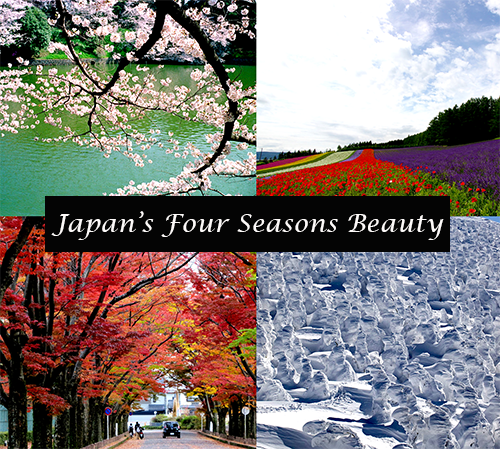The climate of Japan is as diverse and intriguing as the culture that predominates the archipelago. Often referred to as a land of four distinct seasons, Japan’s climatic tapestry weaves together regional differences that are influenced by geography, ocean currents, and prevailing winds. In this exploration, we will delve into the intriguing characteristics of Japan’s climate, unveil the unique attributes of each season, and consider the environmental implications that accompany these natural phenomena.
With its striking scenery, ranging from majestic mountains to lush valleys and pristine coastlines, Japan’s seasonal changes profoundly impact agriculture, tourism, and daily life. Understanding these climatic shifts can offer a broader perspective on environmental challenges and opportunities within this dynamic nation.
Japan’s geographical position plays a pivotal role in shaping its climate. The nation straddles a variety of latitudes and is influenced by both the Pacific Ocean and the Sea of Japan. As a result, the climate can vary dramatically from one region to another, offering an intriguing case study in diversity.
Among the notable climatic zones, the main types include temperate, subtropical, and mountain climates. Let’s embark on a detailed journey through the four seasons of Japan, each offering its own rhythm of life and natural beauty.
Spring in Japan is synonymous with cherry blossoms, or sakura, heralding the arrival of warmer temperatures after the long winter months. Typically, this season spans from March to May, characterized by a mild climate and blossoming flora. The gradual thaw results in a transformation of the landscape; public parks become canvases painted in hues of pink and white. Temperatures gradually rise, averaging between 10°C (50°F) and 20°C (68°F), creating an atmosphere of renewal and exuberance.
Spring also marks the commencement of the farming season, a crucial period for rice paddies. The Japanese engage in various festivals during this season, celebrating the fragrant blooms and reveling in tradition. However, spring’s beauty is tempered by the increasing threat of natural disasters, such as typhoons and floods, which can be exacerbated by climate change.
Summer, extending from June to August, presents a markedly different climate, characterized by high humidity and temperatures that can soar above 30°C (86°F). The onset of the rainy season, known as “tsuyu,” typically occurs in early June, delivering significant precipitation across the archipelago. The combination of heat and humidity creates a sultry atmosphere, which prompts many to seek refuge in air-conditioned environments.
This season is a time of vibrant festivals, encapsulated by dazzling fireworks displays and spirited community events, exemplifying the Japanese culture of conviviality. However, summer in Japan is not without its consequences; the increasing temperature can lead to heatwaves, affecting public health and agricultural production. Additionally, climate models predict that such extreme weather conditions could become more frequent, resulting in implications for both people and the environment.
Autumn, spanning from September to November, offers a breathtaking contrast to the preceding season. This period brings a delightful coolness, with temperatures decreasing to a comfortable range of 10°C (50°F) to 25°C (77°F). The iconic autumn foliage, known as “koyo,” cloaks the mountains and parks in fiery reds, oranges, and yellows, drawing tourists from near and far to immerse themselves in the spectacle of Nature’s artistry.
Autumn is also an important period for agriculture, with the rice harvest being a highlight that sustains traditional celebrations. However, alongside these jubilations, autumn serves as a reminder of the increasing frequency of typhoons, which can have devastating impacts on local communities and ecosystems. Northern regions may experience an early onset of winter, further emphasizing the climatological contrasts found within Japan.
Winter, lasting from December to February, blankets Japan in a tapestry of snow, especially in regions like Hokkaido and the Japanese Alps. Winter temperatures can plummet to below zero in northern areas, while coastal regions experience milder winters due to the moderating effects of the ocean. Winter sports thrive in resorts, with skiing and snowboarding drawing enthusiasts from around the globe.
Despite its splendid scenery, winter brings challenges, including the effects of heavy snowfall on infrastructure and increased energy demands. The Japanese government has been proactive regarding winter preparedness and energy sustainability, particularly as climate change raises questions about energy sources and winter weather anomalies.
In conclusion, Japan’s climate exemplifies the beauty that can arise from seasonal changes and regional diversity. However, the challenges brought upon by climate change highlight the imperative for sustainable practices to mitigate adverse impacts. A nuanced understanding of Japan’s four seasons enables not only admiration for the natural wonders but also a deeper awareness of environmental stewardship. It encourages a shift in perspective, heralding the importance of conservation and resiliency amid our planet’s dynamic climatic changes. As the world grapples with environmental uncertainties, Japan remains an emblematic example of the interconnectedness of climate, culture, and community.








